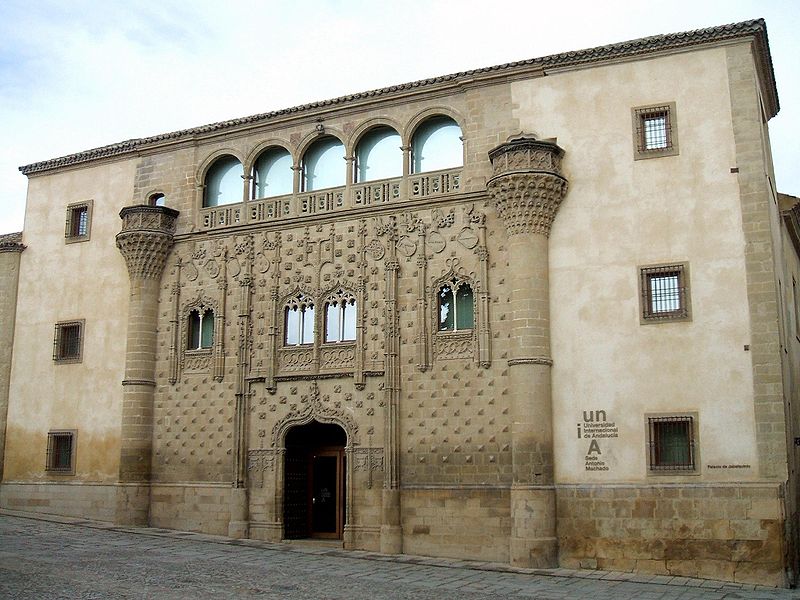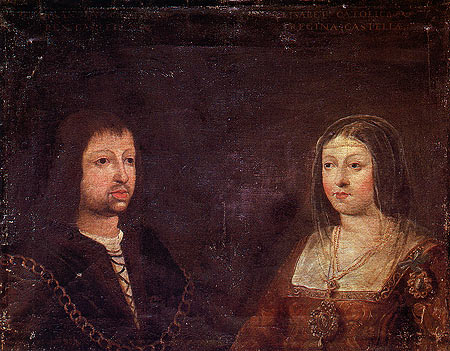The supply of food was but one of the many pressing problems that the sovereigns were called on to solve; and, as the time passed, Ferdinand was almost tempted to raise his camp and retire until he should have made himself master of the surrounding district. To this policy he was urged by the majority of his generals, who contrasted the massive fortifications of Baeza, her hardy soldiers, and her stores of provisions, with the Christian lines, then threatened by inundations of water and decimated by disease.

Jabalquinto Palace in Baeza. Commissioned by D. Juan Alfonso de Benavides Manrique, cousin to King Ferdinand.
Don Gutierre de Cardenas, Commander of Leon, alone protested against a retreat that would represent the waste of so much labor and money; and he was to find a staunch supporter in the Queen, who from Jaen implored her husband not to listen to advice as cowardly as it was mistaken. If he would continue the campaign, she on her part pledged herself to keep a line of communication open, pouring daily into the camp all that it should require in the way of food or ammunition.
The chroniclers have left us minute accounts of her labors to this end, carried through the characteristic thoroughness that had so often brought her success. The purchase of the crops of Andalusia and the lands belonging to the Military Orders; the transference of this grain and hay by a procession of fourteen thousand mules to the seat of war and the outposts already in Christian hands; the repair of roads, worn by traffic and the heavy rains, by the vigilance of an army of engineers, kept ever at hand for the purpose; the enrollment of fresh troops and workmen to replace those lives lost in the great crusade; most arduous of all the continual disbursement of the money that came so slowly again into the royal treasury. At times the attempt to adjust the balance between demand and supply appeared impossible; and rents and subsidies failed as expenses grew, but Isabel’s hand on the helm of affairs never wavered. The crown jewels were pawned to the merchants of Valencia and Barcelona, but the campaign against Baeza did not slacken….
At the beginning of December, Baeza capitulated on the promise of security of life and property for all its defenders and inhabitants; with the proviso that they might live if they chose as Castilian subjects, keeping their own religion and laws.
Ierne L. Plunket, Isabel of Castile and the Making of the Spanish Nation: 1451-1504 (New York: G. P. Putnam’s Sons, 1915), 216-20.
Short Stories on Honor, Chivalry, and the World of Nobility—no. 292











